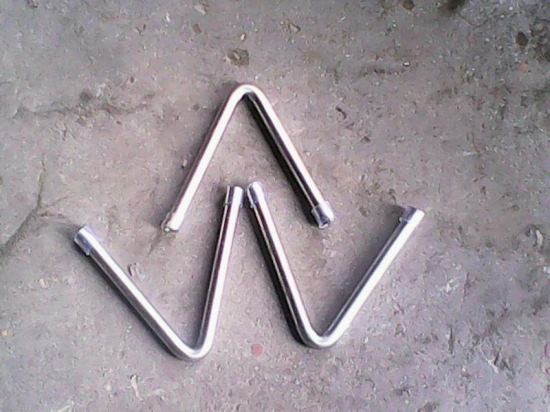Installation density and construction requirements of refractory castable anchor nails
2020-04-30 15:35:32
We know that the construction process of refractory castables is mainly: anchor nail welding, formwork installation, waterproofing agent painting, casting material pouring and vibrating compaction, expansion gap reservation and filling, and casting material maintenance. Among them, the installation and welding of anchor nails is the most important, which directly determines whether the castable construction is qualified or not.

Before the construction of the anchoring nail casting material, it should be checked whether the nail is welded firmly, and whether the iron guard at the kiln mouth is loose (loosened bolts, deformation of the barrel). The expansion coefficient of heat-resistant steel is much larger than that of ordinary steel. As shown in Fig. 4, after heat, the expansion of the heat-resistant steel along the axial direction of the welding part of the cylinder is greater than the expansion of the cylinder, and the weld seam is very easy to crack. If the anchor nail is removed, it will be useless, or even useless.
The installation of the kiln mouth castable anchor must meet the specifications. In addition, the corners are welded with 8mmV-type anchor nail anchors, and each anchor is welded with 2 anchors. The surface of the anchor should be coated with paint or plastic tape. The anchoring nails should be used to buffer the expansion stress after heating. The expansion joints should be left with linoleum paper where it contacts the refractory bricks.
The expansion coefficient of heat-resistant steel is greater than the expansion coefficient of the castable. After heating, if the reserved expansion joint is smaller than the radial expansion of the anchor nail, it will definitely have a destructive effect on the refractory material. It is expected that the axial length of the anchor nail is large, the expansion along the axial direction of the anchor nail is greater, and the damage to the refractory material is more serious. At present, although the anchor nails are also coated with oil expansion joints, such as plastic pipes, plastic wraps, and asphalt, they have not met the expansion requirements, so the damage of the anchor nails to the refractory still exists, and the service life of the refractory is still not ideal. .
The mouth guard and the cylinder body should be installed tightly, and the anchoring nails should not be loosened; from the seven o'clock position, the formwork should be supported, and the height of each form should be less than 60cm; every 80cm, leave a 3-5mm expansion joint. The expansion joints are reserved for two Junction of the mouth guard. An expansion joint is provided in the middle of the longitudinal length of the anchor nail over 1 meter.
Generally, the anchor nail material is heat-resistant steel, the cylinder body is ordinary steel, and the refractory material is castable. The coefficient of thermal expansion is different between the three. Change the connection mode of the anchor nail and the barrel to screw connection. Nuts of the same material as the barrel are welded to the barrel. Because the expansion number is close, the expansion amount is close, and the weld will not crack due to thermal expansion. The end of the anchor nail is designed to be connected with a thread and a nut. Although the expansion coefficients of the two are different, the link can only be stronger after heating, which ensures the effective connection of the anchor nail.





